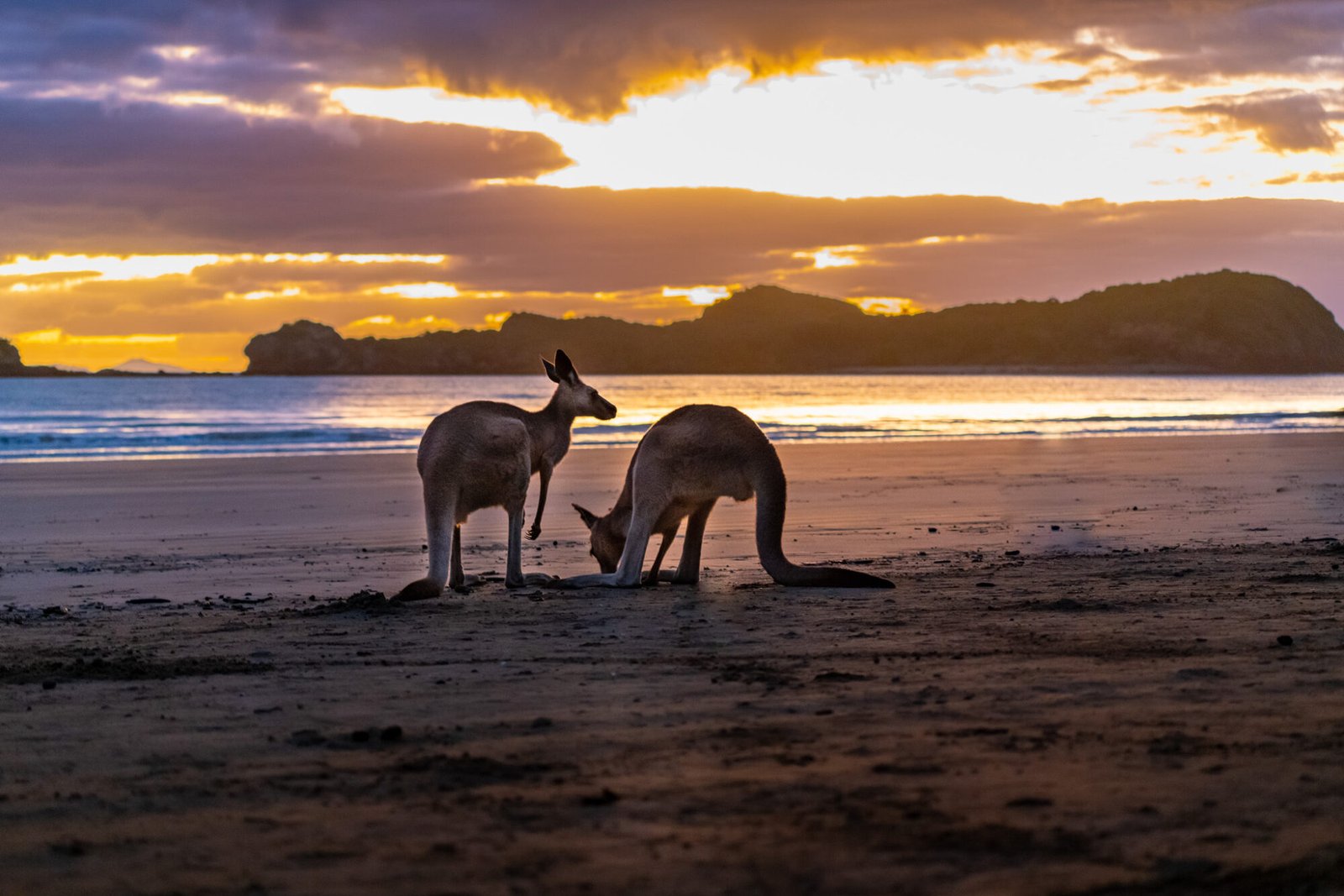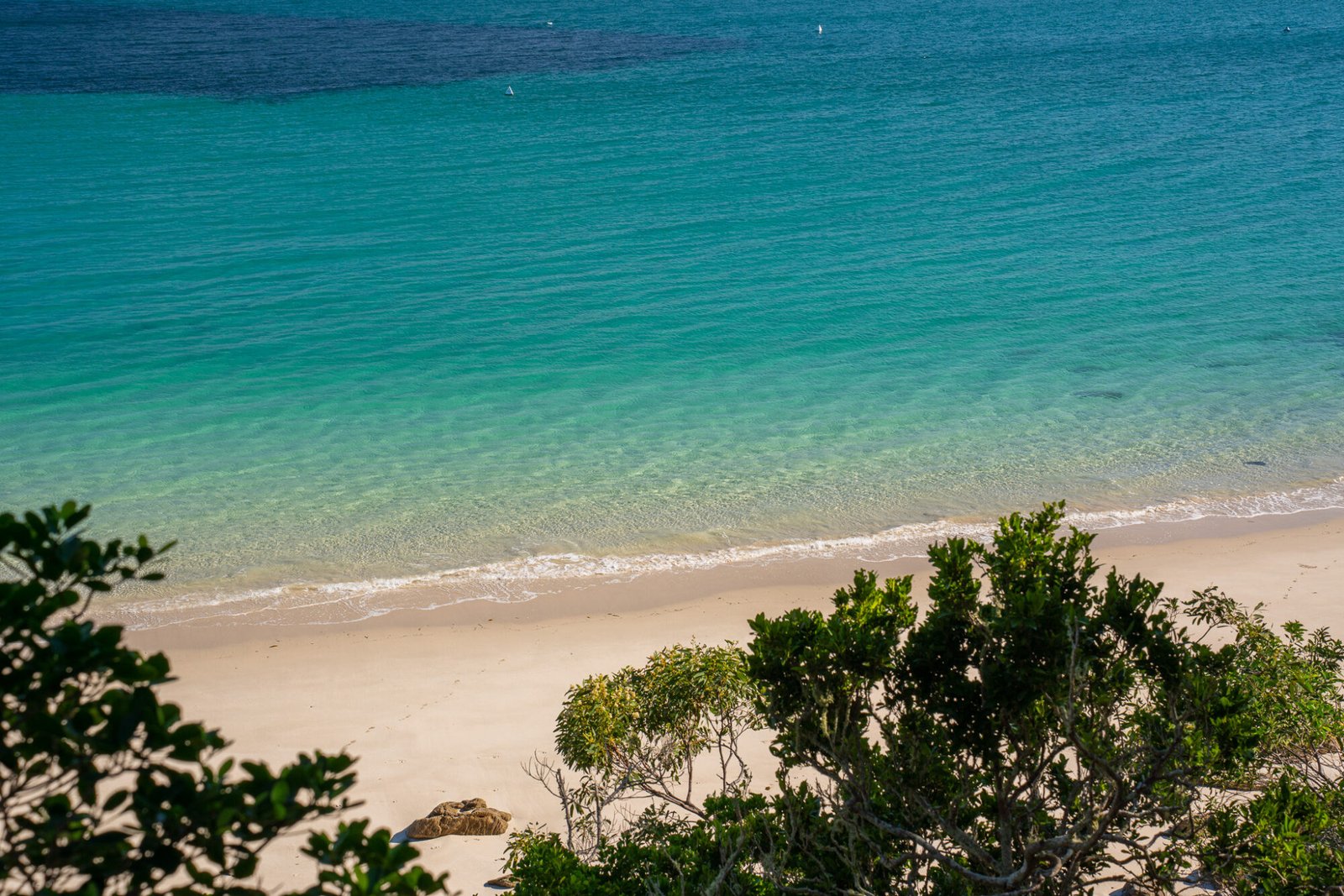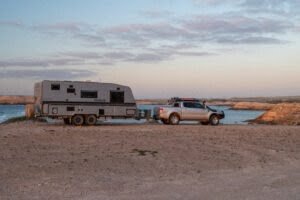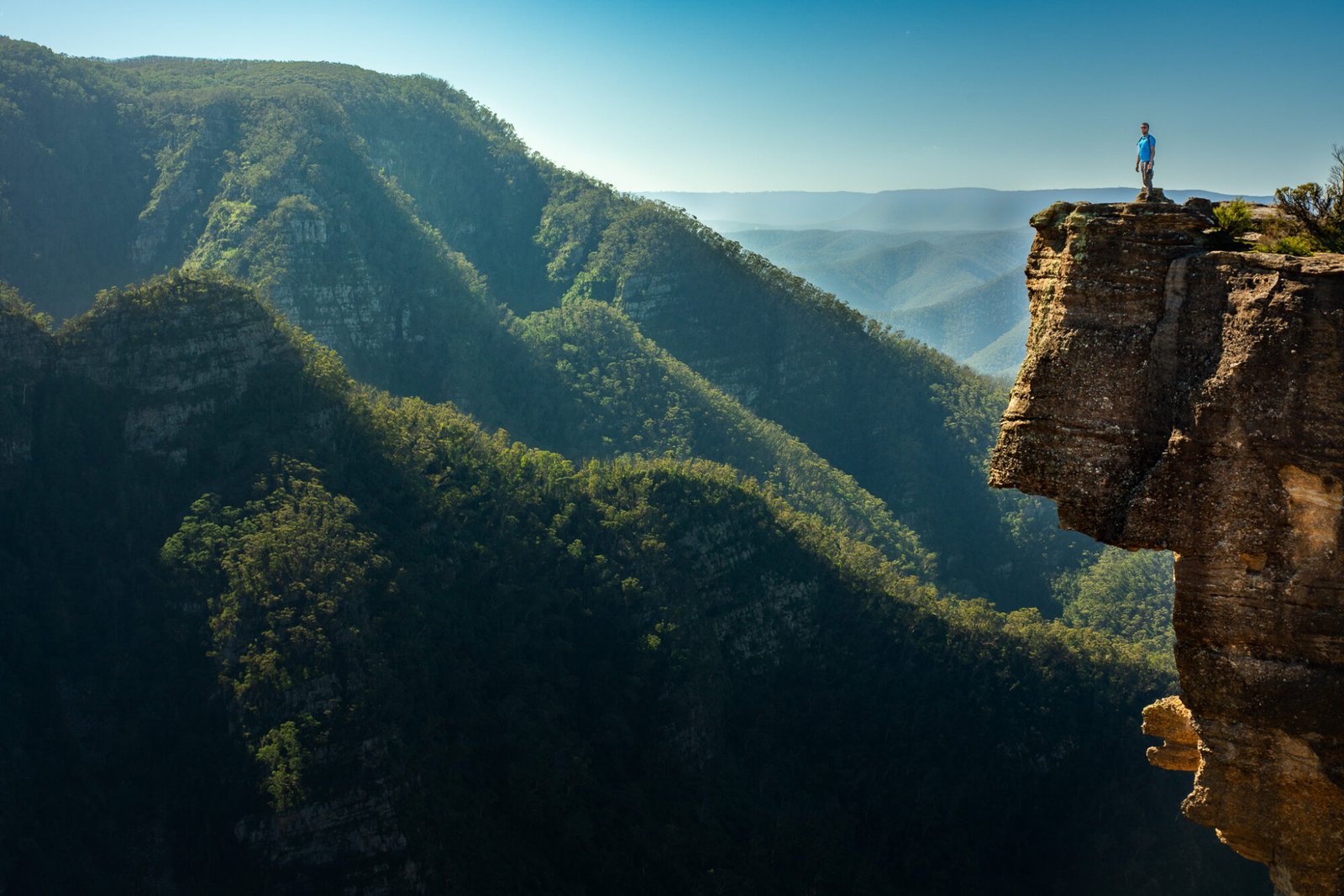It’s pretty much guaranteed that on every avid Australian 4×4 driver’s bucket list is the Simpson Desert (known affectionately as “the Simmo”). Although it’s not quite as rugged and isolated as it used to be, it still symbolises a sense of adventure and of tackling Outback Australia, some of the most remote terrain in the country and the world. At 176,500 square kilometres, it is the largest parallel sand dune desert in the world, it lies across three states (Northern Territory, South Australia, and Queensland), and it’s said to have 1,136 dunes (not that we counted to verify!). In June 2019 we crossed the Simpson Desert via the French Line then took the Strezlecki Track back around to Alice Springs; this is our story.
We started our journey in Alice Springs, where we had already been based for about a month. Although it is possible to do a Simpson crossing solo, it is not recommended for a multitude of reasons, and we were lucky enough to have Marc’s parents along for the ride. After careful planning and stocking up of supplies we headed off south on the Stuart Highway, turning east at Kulgera, and making camp for the night at Lambert’s Geographic Centre of Australia.
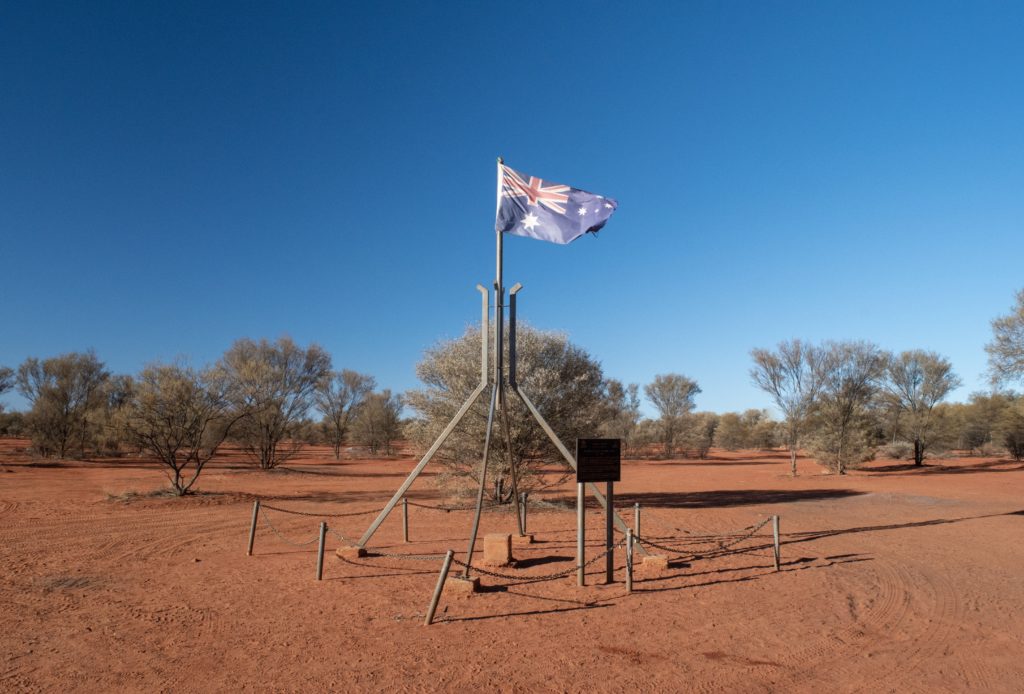
Marc’s dad, Frank, also had a sort of score to settle with the place. About four years ago, just after another Simpson Desert crossing, he very infamously tripped on the chain around the monument and broke his wrist and had to be rushed back to Alice Springs to have it surgically repaired. Luckily, this time there were no mishaps and we could simply sit around the campfire and enjoy the solitude.
The next day we stopped at Mount Dare Hotel for a last top up of fuel, which, at $2.45 per litre, broke the record for the most expensive fuel we’ve come across on our trip so far. Nevertheless, the peace of mind of feeling more confident that you have enough fuel to get you to the other side of the Simmo is well worth the cost. Although it may not be as remote as it was back in the day, if you get stuck out there and need someone to rescue you, guaranteed the price tag will be a lot higher than $2.45 per litre. From there we continued on to Dalhousie Springs, an exceptional oasis of a hot springs in the middle of the Outback and part of the Great Artesian Basin (the same as the springs we came across along the Oodnadatta Track).
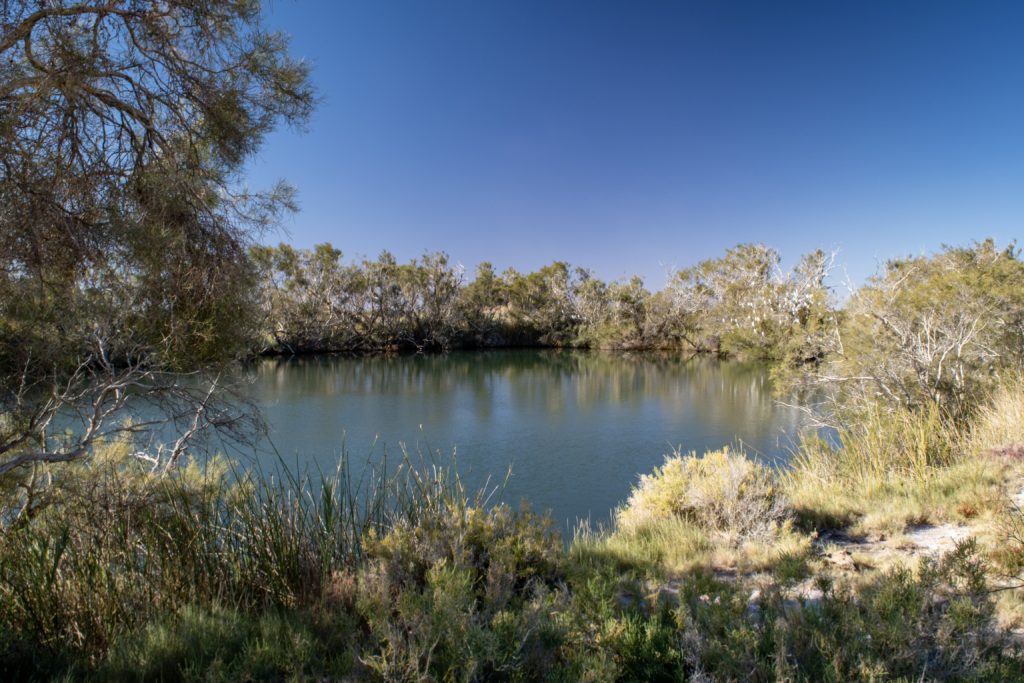
We didn’t end up swimming at Dalhousie because we thought we would be passing through again in the near future, which didn’t end up happening, but this taught us a good travel lesson: take advantage of what’s in front of you now and don’t always assume you’ll get another opportunity. When traveling circumstances can change unexpectedly and sometimes you won’t get that second chance. Anyways, it gives us an excuse to have to go back!
Leaving Dalhousie, we could feel our excitement build as we made our way closer and closer to the start of the Simmo, until we hit a patch of bulldust. For those of you who don’t know, bulldust is an extremely thin and light dust, almost as fine as talcum powder. It can be a real menace when driving in the Outback as it is very effective at concealing other possible hazards like ruts and rocks. We hit the bulldust at a fairly decent speed and suddenly dropped into a large concealed pothole, causing a big puff of dust to envelop the car. At first we thought we had gotten through it unscathed, but then the screeching started. A horrible, gut-wrenching sound that immediately made us panic and think, “are we going to have to turn around, this close to the start?” After stopping and starting and going forward and in reverse a few times, we were able to work out the most likely cause of the screech was that the bulldust had lodged itself in one of the wheel’s disc brakes and was causing enough friction to create the noise we heard. After blasting the wheel with the air compressor, the sound stopped and we continued on our way. Phew!

As we approached the eastern end of Witjira National Park, the dunes started to appear, one after the other rolling off into the horizon. With it getting late and fatigue starting to set in, we decided to set up camp at Purni Bore. Getting to the start of the Simpson Desert would have to wait until tomorrow.

The next morning we continued east, crossing the border into the Simpson Desert. We affixed our brand new sand flag to our car; when crossing the Simpson Desert, you are required to have a large sand flag attached to your vehicle at all times so oncoming traffic has a bit more of a warning that you’re coming over the dune from the other side. It’s also highly recommended that you have a radio on channel 10, so that you can notify any possible oncoming cars of your presence. Without these safeguards, the possibility of a head-on collision occurring while coming over a dune would be fairly high.
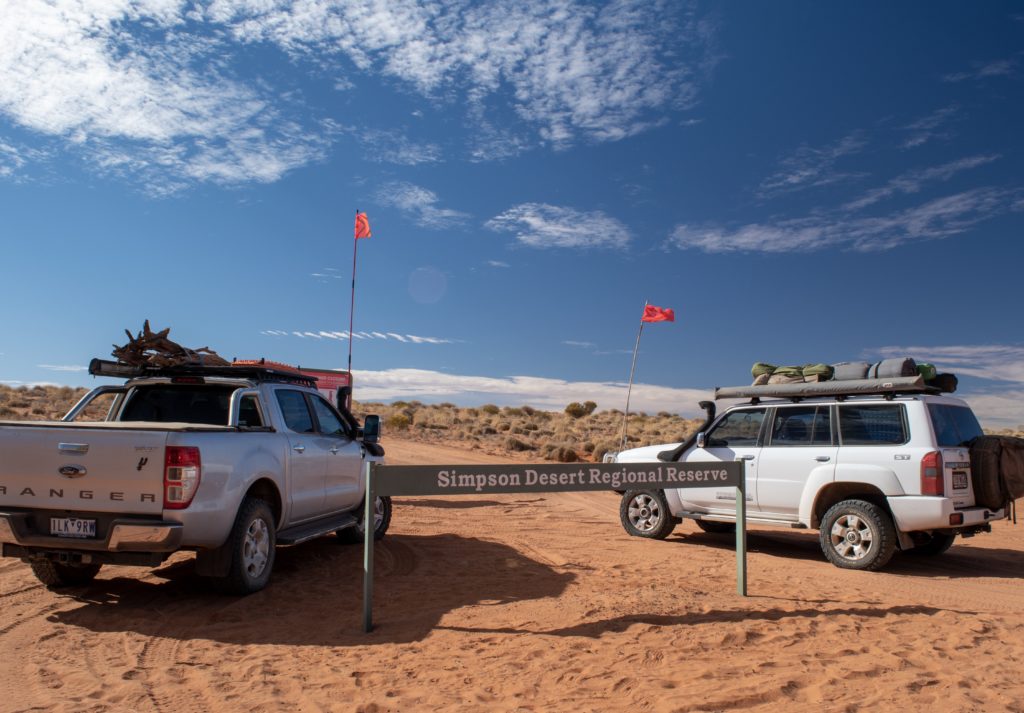
As we started traversing the dunes, we noticed our sand flag violently waving back and forth over every bump in the track, and at first we shrugged it off. Surely it was designed to take the forces of the rough sand track? Then, two hours into our journey, the sand flag unexpectedly snapped off! We had no choice but to tape it down, first to our aerial, then the sports bar in the back.
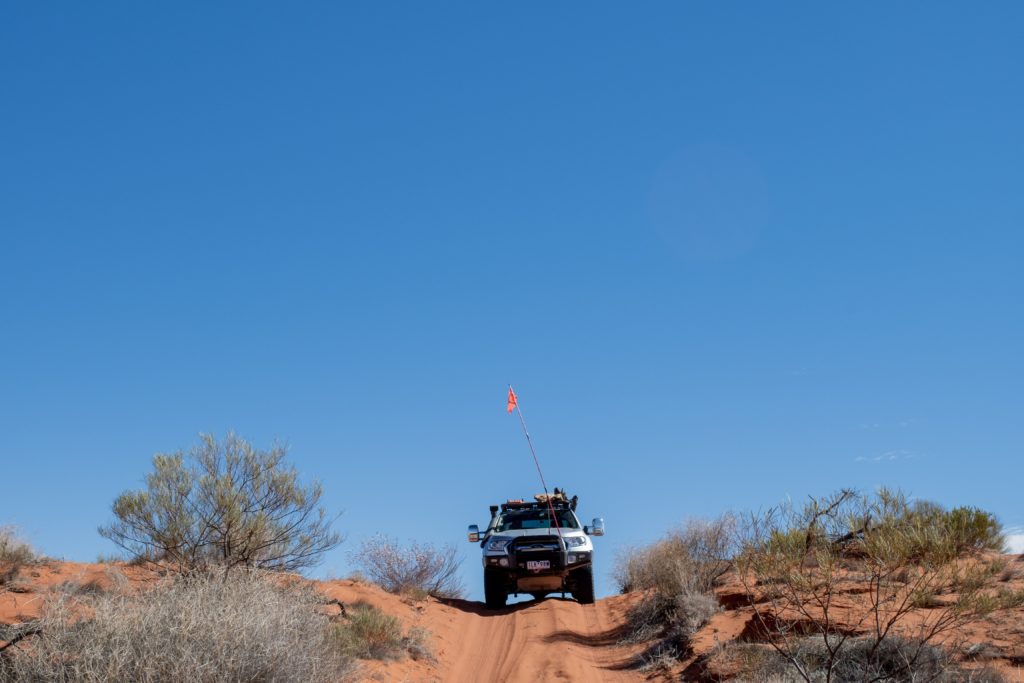
For the next three days, we plodded along at an average speed of 20kph, up and down, up and down, some dunes so large that as you drove up all you could see was blue sky until you plunged over the top, red sand suddenly rising up before you, all the while hoping you kept to the track as you navigated your way down the other side. Every now and then the dunes would give way to salt lakes and hard, flat ground; we enjoyed the respite while it lasted. We also passed through Poeppel Corner, where South Australia, Queensland and Northern Territory all meet.
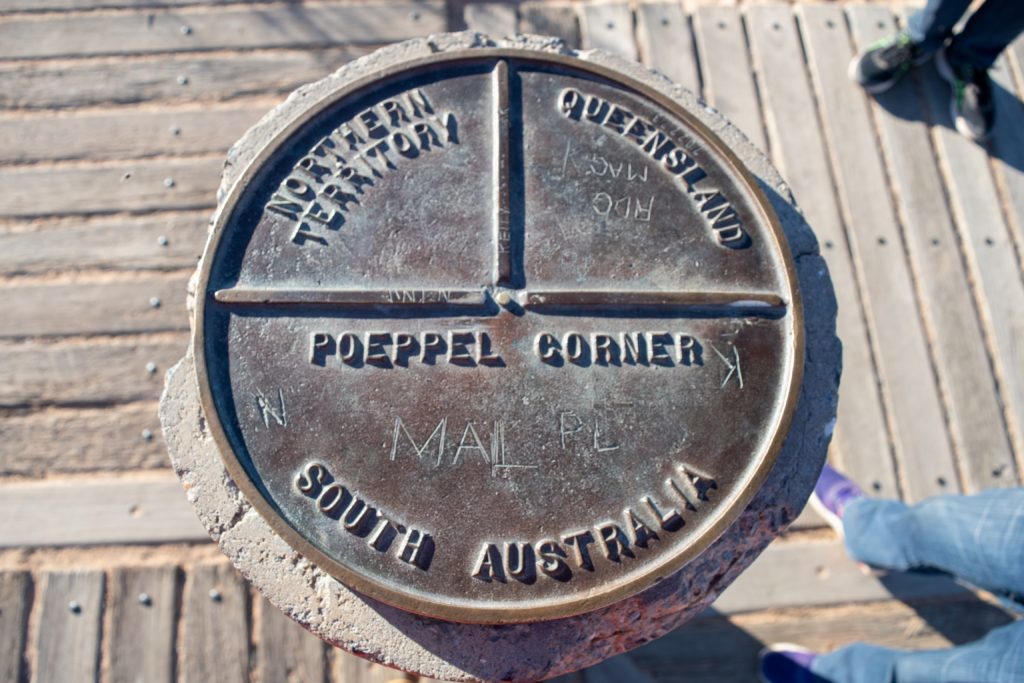
Just as we were getting used to the vast barrenness of the desert, we came upon an unexpected sight: life! Seemingly out of nowhere, we could suddenly see swathes of green grass streaked through the sand, colourful wildflowers dotting the red dunes, countless butterflies flitting about, birds darting and chirping merrily away…this is not the Simpson Desert we had pictured! However, thanks to the floods in early 2019, the rare event of water in the desert had allowed for all this life to spring up; it was a beautiful sight to behold!
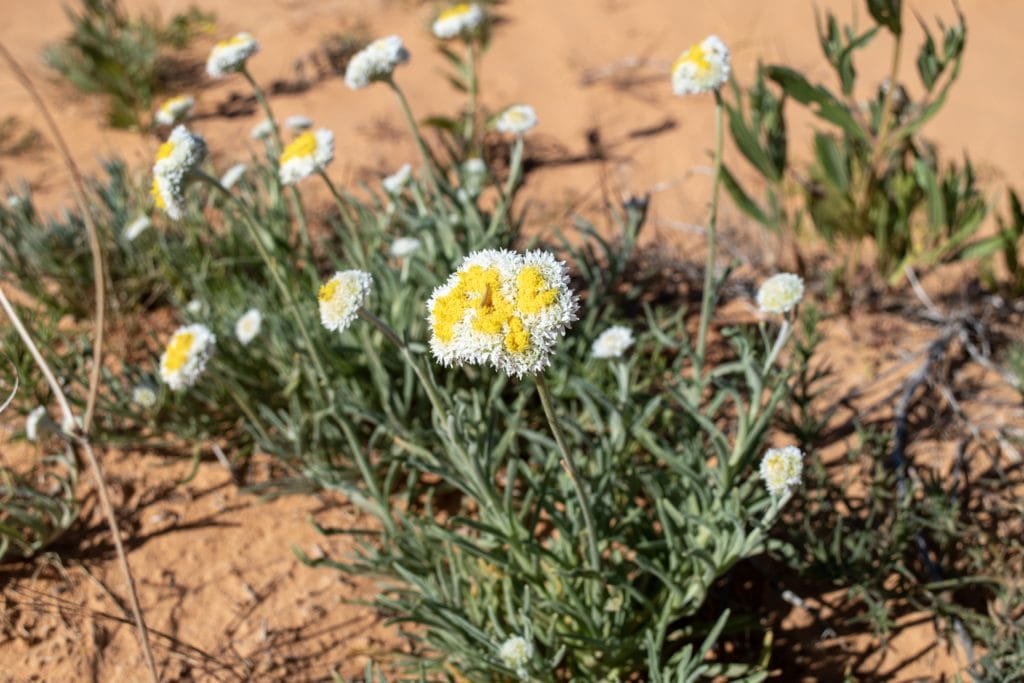
Little did we know the flood was about to affect our journey in a much more significant way. The recent floods had caused some of the salt lakes along the track to become impassible, requiring a large detour of several hours through private pastoral land. Luckily for us, we had enough fuel and supplies to still get us to Birdsville, but it meant we would need to stay an extra night in the Simmo, an extra night before we could have that shower we craved so much. This minor inconvenience allowed us to have a very unique experience for a Simpson Desert trip: a water crossing! And to top it off, we were able to enjoy our last night’s camp looking out over Big Red, the most infamous dune of the Simmo.

Big Red, at 40 meters tall, is the largest dune in the Simpson Desert and is many 4×4 driver’s undoing. At any time, there are several tracks you can choose to take up the dune, with varying levels of difficulty, the easiest being labelled the “chicken track.”
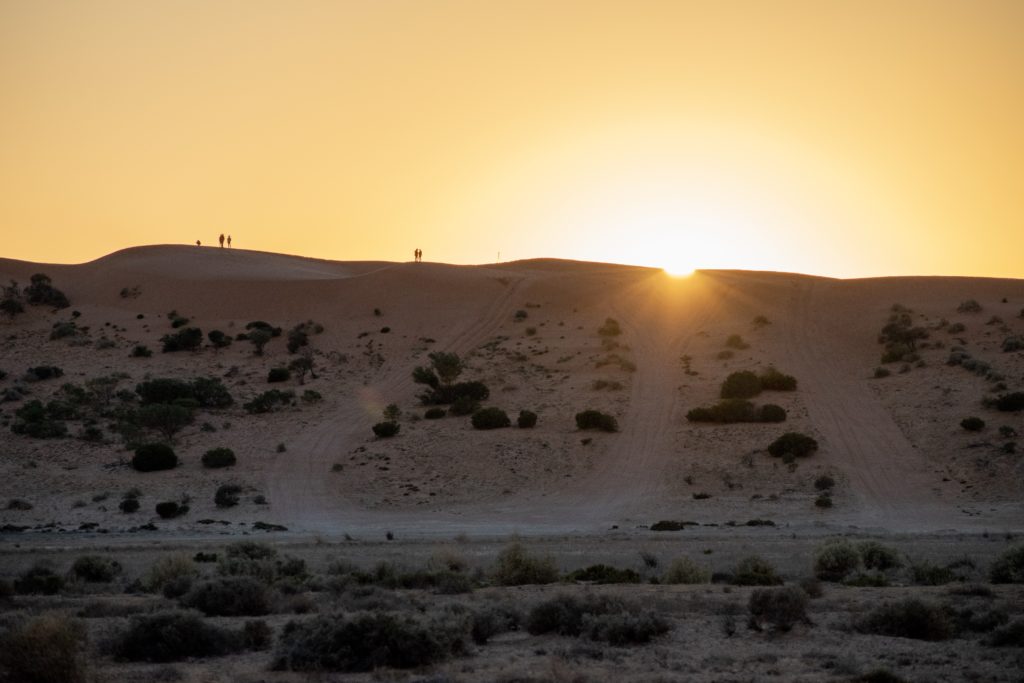
It took a few attempts to work out the best line and speed, but we were eventually able to make it up without resorting to the easy track! It was a great feeling of accomplishment sitting at the top of this dune, looking back on where we had come from. We lingered for a bit, watching others attempting to conquer Big Red, until we made our way to Birdsville for a well-earned shower and beer(s) at the Birdsville Hotel.
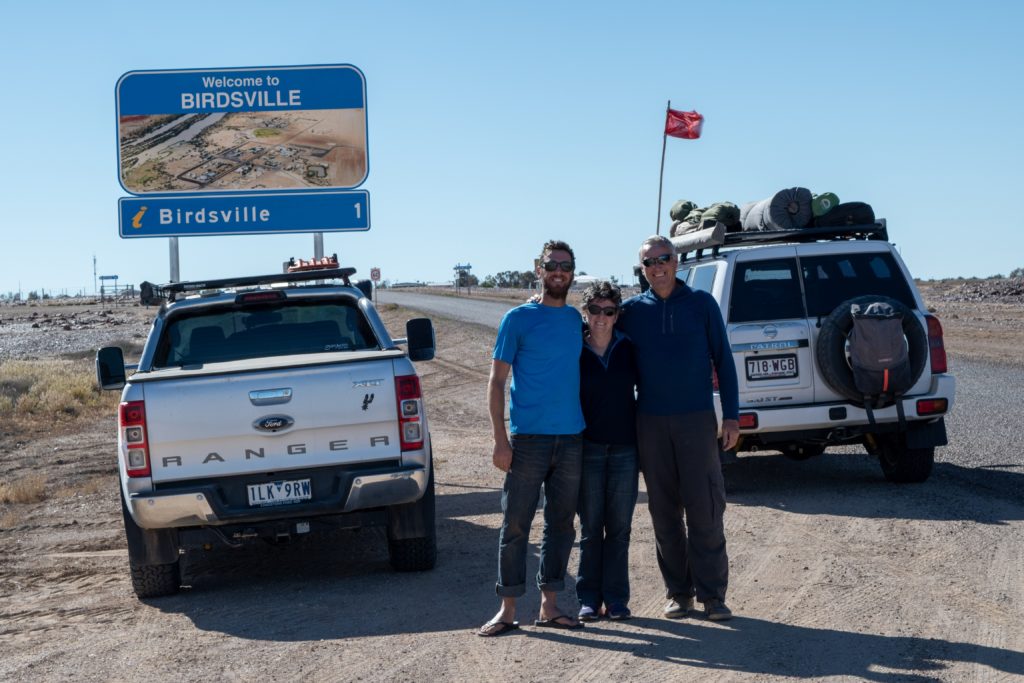
After Birdsville, we parted ways with Marc’s parents to travel down the Strezlecki Track via Innamincka. Innamincka is steeped in history from the doomed Victorian explorers Robert Burke and William Wills. If you only read about one failed exploration of Australia, make it the story of Burke and Wills, particularly Peter Fitzsimons’ recounting. The most astonishing aspect of the story isn’t necessarily that they failed, but how closely they came to succeeding, and much of this tragedy unfolded along the banks of Coopers Creek, which runs through Innamincka. In and near Innamincka Reserve, you can visit the Dig Tree, and (spoiler!) both Burke and Wills’ graves, and a couple other significant points.

And if you’re craving a tasty pub burger, the Innamincka Pub won’t let you down! Spending the night in Innamincka Reserve, we had what we thought was an idyllic camp spot along the creek; that is, until it got dark.

We were thoroughly enjoying sitting around the campfire as our dinner cooked in the camp oven, sipping on a nice glass of wine, when we noticed the ground. It was moving. Correction: there were THOUSANDS of bugs moving along the ground along the periphery of our fire. Then they were on us, then in our wine (the last straw!). Out of all the years of camping we’ve done, this was the very first time we had to retreat to the car to eat our dinner. Nevertheless, we had a tasty dinner sitting in the Ranger as the sound of all those bugs pelting against the car made it sound like rain outside. Lovely, right?

Now when it comes to the Strezlecki Track, often labelled an iconic Aussie 4×4 track, we wouldn’t really classify it as a challenging, or honestly even a particularly interesting track. When it comes down to it, we would more describe it as a gravel highway, traversing through lumpy, barren terrain. If you want to experience the true, vast desolation of the Outback, then the Strezlecki delivers.

What we did love most about the Strezlecki Track is its history, the story of why it even exists in the first place: a story so quintessentially Australian, it’s almost hard to believe. The track was originally forged in 1870 when Henry Arthur Redford drove thousands of stolen cattle from Queensland, through this region, to be sold off in South Australia. He was eventually caught and went to trial, but the court was so impressed with this feat that he was allowed to simply walk free!
From the Strezlecki we rejoined the Oodnadatta Track and followed it to Coober Pedy, a peculiar town based around the opal mining business. It gets so hot here in the summer that many people have resorted to building their houses underground; there are even several underground churches…in the literal (not hipster) sense!

Then before we knew it, we were back “home” in Alice Springs. Another 4×4 adventure checked off the bucket list!
Our Tips for the Simmo:
- get your car inspected beforehand
- get as much fuel as you can in larger towns (eg Alice Springs) as opposed to more remote places
- Bring extra supplies (food, water, etc) for any unexpected delays
- travel with at least one other car
- lower your tyre pressure once you reach the sand (we had ours at 18psi)
- have a handheld radio or UHF to channel 10 at all times and occasionally call out over the radio to notify any oncoming traffic of your presence
- make sure your sand flag is sturdy!

